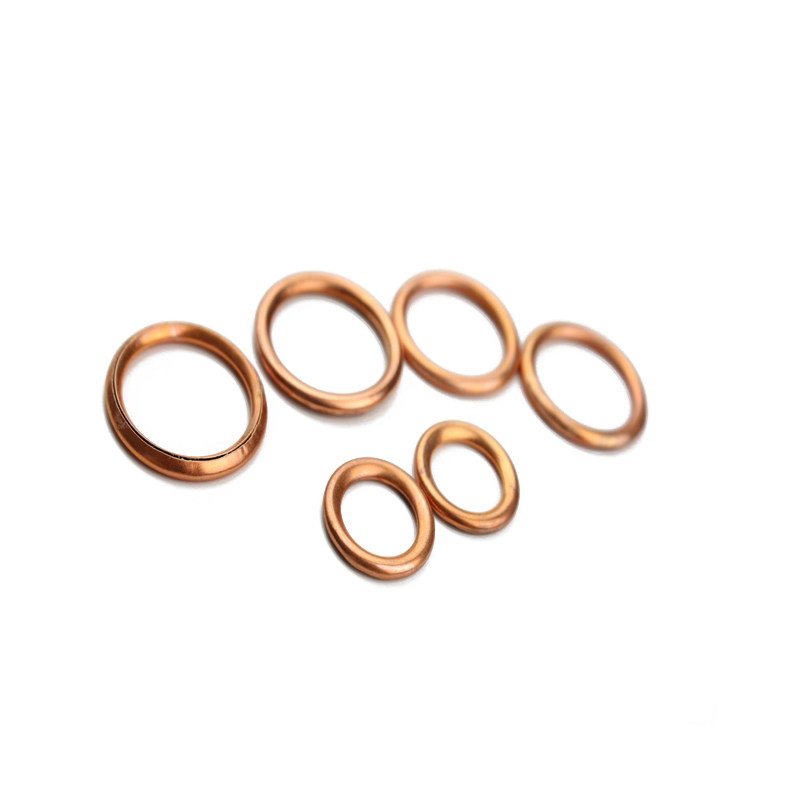Understanding Encapsulated O-Rings for Enhanced Sealing Solutions and Applications
Understanding Encapsulated O-Rings A Comprehensive Guide
Encapsulated O-rings are specialized sealing components that have gained significant attention in various industrial applications due to their unique design and functionality. Unlike traditional O-rings, which are made from rubber or elastomers, encapsulated O-rings consist of a core material, typically a more durable elastomer, that is completely surrounded by an outer layer of chemically resistant material, such as fluoropolymer. This design provides a combination of benefits that makes encapsulated O-rings suitable for challenging environments.
Construction and Materials
The construction of encapsulated O-rings generally involves a two-layer system. The inner core provides elasticity and deformation under pressure, ensuring a tight seal, while the outer layer protects against chemicals, temperatures, and wear. Common materials used for the core include Nitrile (Buna-N), EPDM, and Silicone, while the encapsulating layer is often made from materials like PTFE (polytetrafluoroethylene) or FKM (fluoroelastomer).
This dual-material approach allows encapsulated O-rings to withstand harsh conditions, including extreme temperatures, aggressive chemicals, and abrasive environments. For instance, the fluoropolymer outer layer can handle temperatures ranging from -200°C to over 200°C, depending on the specific product, making them ideal for applications in the chemical processing, pharmaceutical, and food industries.
Advantages of Encapsulated O-Rings
One of the primary advantages of encapsulated O-rings is their chemical resistance. The outer fluoropolymer layer effectively prevents the permeation of aggressive substances, protecting the inner core from degradation. This is particularly important in processes involving harsh chemicals that can corrode traditional elastomers. As a result, encapsulated O-rings provide enhanced longevity and reliable performance, reducing the need for frequent replacements and minimizing downtime.
encapsulated o rings

Additionally, the encapsulated O-ring’s design reduces the risk of the elastomer leaching into sensitive environments, which is a critical factor in food processing and pharmaceutical applications. The outer layer acts as a barrier, preventing contamination and ensuring compliance with safety and regulatory standards.
Applications
Encapsulated O-rings are utilized across various industries and applications. In the oil and gas sector, they are used in downhole applications where exposure to high pressures and aggressive chemicals is common. In the pharmaceutical industry, encapsulated O-rings are essential for ensuring that products remain uncontaminated during production processes. Moreover, in the food and beverage industry, these O-rings facilitate safe sealing in machinery, ensuring that food products meet health regulations.
Moreover, encapsulated O-rings are also popular in automotive applications, where they are employed in components subjected to high-temperature environments or aggressive fluids. Their versatility makes them a preferred choice for engineers seeking reliable sealing solutions.
Conclusion
Encapsulated O-rings are a remarkable innovation in sealing technology, combining the benefits of traditional O-rings with enhanced chemical resistance and durability. Their unique construction allows them to function effectively in diverse and demanding environments, making them indispensable for various industries. As industries continue to evolve and face new challenges, the role of encapsulated O-rings as reliable sealing solutions will remain crucial in ensuring operational efficiency and safety. Understanding their design, advantages, and applications can help engineers and decision-makers select the best sealing methods for their specific needs, ultimately leading to improved performance and reliability in their operations.
-
Understanding Automotive Oil Seals: Essential Components for Engine and Shaft Protection
News Jul.30,2025
-
The Importance of Heavy Duty Seals in Industrial and Residential Applications
News Jul.30,2025
-
Exploring Industrial Oil Seals: From Felt Oil Seals to TTO and CFW Solutions
News Jul.30,2025
-
Essential Guide to Oil Seals: From Radial to Metal-Cased Seals for Industrial Reliability
News Jul.30,2025
-
Choosing the Right Oil Seals and Gaskets for Industrial and Automotive Applications
News Jul.30,2025
-
Cassette Seals: Durable Sealing Solutions for Harsh Environments
News Jul.30,2025
-
Understanding the Front Main Engine Seal: Purpose, Maintenance, and Installation
News Jul.29,2025
Products categories















